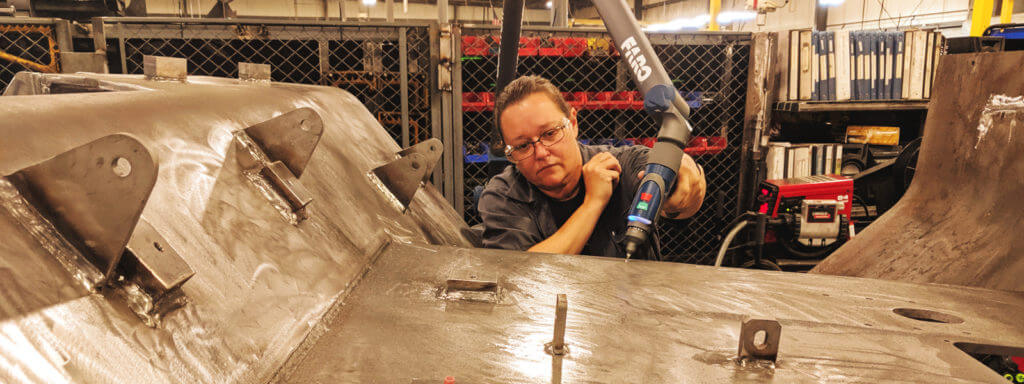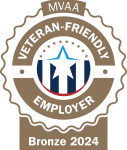Headquartered in Grand Rapids, Michigan, Plasan North America (PNA) manufactures metal, composite, and ceramic-composite components for defense and commercial applications. PNA brings decades of process experience to bear in creating the world’s most advanced armor, metal components, and fabrications.
Challenge
PNA has a vision to become the global leader in armor solutions based on innovation and quality. This vision spurs growth that regularly challenges the company’s quality team to grow right along with production. Accelerating product development forced PNA’s quality department to reassess the capability of its current inspection equipment.
“We were facing some pretty aggressive timelines on launch activity,” explains Tony Bellitto, quality manager at Plasan North America. “We were scheduled to launch 140 new part numbers, and most of them included GD&T [geometric dimensioning and tolerancing], not just basic measurements.”
Some of the parts PNA manufactures are of considerable size and weight, which posed further challenges.
“Some of these products are up to eight feet across,” says Christine Foley, senior quality engineer at PNA. “One of the underbelly parts we produce for tactical vehicles weighs about 2,500 pounds.”
The large armor parts have multiple bends, which are formed in a brake press. The sheer size and weight of the part complicates the inspection process.
“We’re dealing with multiple bends in up to 12 millimeters of ballistic steel,” says Foley. “And some of these parts have a surface profile tolerance of 60 thousandths of an inch.”
Looking at the long-term strategy for PNA, the quality team saw that the production status quo wouldn’t work. “It was clear that verifying tolerances with a typical fixed-CMM would not be the most efficient solution for inspecting the larger parts we produce,” says Bellitto.
“A traditional fixed-CMM has its place,” says Foley. “But some of these parts are so heavy they require an overhead crane to lift them into the brake press. You can imagine what they might do to the granite table of a fixed-CMM, not to mention the floor space required to house and operate one. On top of that, there’s just no way we could physically get these parts into the enclosed environment that fixed CMMs require.”


